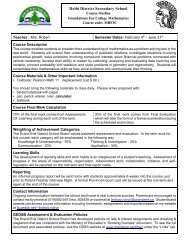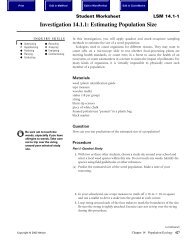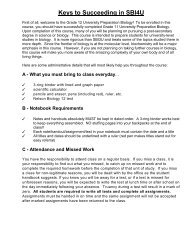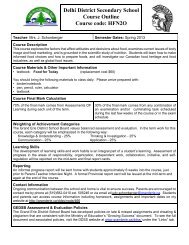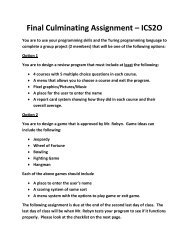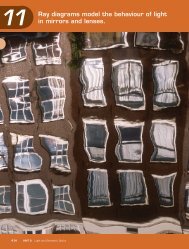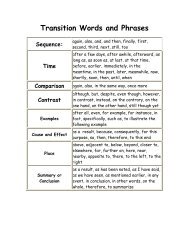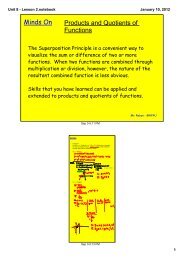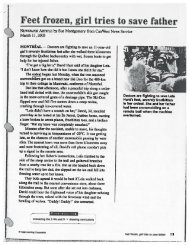Chapter 4.pdf
Chapter 4.pdf
Chapter 4.pdf
You also want an ePaper? Increase the reach of your titles
YUMPU automatically turns print PDFs into web optimized ePapers that Google loves.
Suggested Activities •<br />
B7 Inquiry Activity on page 156<br />
B8 Inquiry Activity on page 158<br />
B9 Design a Lab on page 160<br />
Observing Chemical Properties<br />
A chemical property describes the ability of a substance to change<br />
into a new substance or substances. Chemical properties include<br />
how a substance interacts with other substances, such as acids, or<br />
how it reacts to heat or light. A chemical change always results in<br />
the formation of a new substance or substances. For example, when<br />
zinc metal and hydrochloric acid are mixed, they undergo a<br />
chemical change that produces two new substances: hydrogen gas<br />
and a compound called zinc chloride. A chemical reaction is a<br />
process in which a chemical change occurs.<br />
Chemical properties can be observed only when a chemical<br />
change occurs. If you mix baking soda and vinegar, you will<br />
produce a chemical change that involves the formation of gas<br />
bubbles. In general, evidence of chemical change can include a<br />
great variety of changes, including colour, odour, temperature, the<br />
production of light, the formation of a new solid inside a liquid,<br />
or the production of a new gas (Figures 4.21 and 4.22). Table 4.2<br />
lists various chemical properties.<br />
Table 4.2 Examples of<br />
Chemical Properties<br />
Chemical Properties<br />
Absorbs heat during reaction<br />
Combustible<br />
Forms gas when heated<br />
Reacts with acid<br />
Reacts with water<br />
Emits heat during reaction<br />
Emits light during reaction<br />
Forms a precipitate (solid) in a<br />
solution<br />
Figure 4.21 Fireflies contain a chemical called luciferin. When luciferin reacts with oxygen,<br />
light is emitted.<br />
Figure 4.22 Chemical changes made this banana ripe — and then rotten.<br />
152 UNIT B Atoms, Elements, and Compounds



